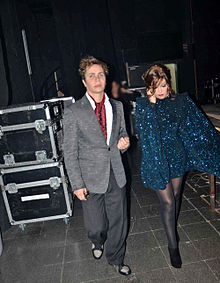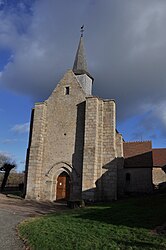루스트럼
Lustrum루스트룸(IPA: [ːlu̠s̪tʊrʊ], 복수형 루스트럼)은 고대 로마에서 5년을 가리키는 용어이다.
이것은 동형문자의 루스트럼(/lstrstrmm/LUS-trmm)과는 다르다.야수의 소굴(및 비유적으로 악의 소굴), 복수의 루스트라(/lstrstrɑ/LUUS-trah)[1]이다.
역사
성욕은 원래 인구 조사를 끝냈을 때 로마 국민의 이름으로 검열관들 중 한 명이 바친 속죄와 정화를 위한 제물이었다.그 제물은 종종 수오베타우릴리아로 알려진 동물 제물의 형태였다.
이러한 조사는 5년 간격으로 이루어졌고, 따라서 5년의 인구 조사 기간을 가리키는 루스트럼이 생겼다.루스트럼(Lustrum, 고대 그리스어: oύύω lu lu lu)은 인구조사가 끝난 후 캠퍼스 마르티우스의 검열에 의해 행해지는 로마 국민 전체의 성욕 또는 정화이다.이 정화는 5년에 한 번만 이루어지기 때문에 루스트럼이라는 단어는 두 루스트라 사이의 시간을 나타내는 데에도 사용되었다.
첫 번째 루스트룸은 기원전 566년 세르비우스 왕이 인구조사를 마친 후 행해졌으며, 이후 인구조사가 끝난 후 5년마다 정기적으로 행해졌다고 한다.공화정 초기, 인구 조사 업무와 루스트럼의 엄숙함이 영사에 의해 수행되었다.최초의 검열관은 기원전 443년에 임명되었고, 올해부터 기원전 294년까지 리비(X.47)에 따르면, 26쌍의 검열관만 있었고, 만약 모든 것이 규칙적이었다면, 21쌍의 루스트라, 즉 일반적인 정화만이 있었을 것이다.때때로 인구조사는 전혀 실시되지 않았거나 적어도 검열관에 의해 실시되지 않았다.인구조사는 루스트럼 없이 이루어질 수 있으며, 실제로 이러한 종류의 사례는 기원전 459년과 214년에 기록되었다.이 경우 공화국에 큰 재난이 닥쳤기 때문에 루스트룸은 공연되지 않았다.
루스트럼이 발생한 시간이 계산되었습니다.각각 304일씩의 고대 로물리안 6년은 2일의 차이로 각각 365일의 태양년 5년과 같거나, 366일의 윤년 또는 고대 6년은 1824일을 만든 반면, 5개의 태양년은 1826일을 포함했다.따라서 고대 로마의 위대한 해인 루스트룸은 순환이었고, 그 끝에 고대 해의 시작은 태양년과 거의 일치했다.그러나 우연이 완벽하지 않아 11루스트럼마다 24일이라는 달이 끼워졌다.그러한 순환이나 위대한 해의 재발은, 초기부터, 희생과 정화로 엄숙하게 행해졌고, 세르비우스 왕은 그것들을 도입하지 않고, 단지 그의 인구 조사와 관련지어, 우리가 보아 온 것처럼, 그 이후의 시대를 위한 본보기가 되었을 가능성이 높다.
마지막 루스트룸은 서기 74년 베스파시아누스 [citation needed]시대에 로마에서 엄숙하게 거행되었다.





